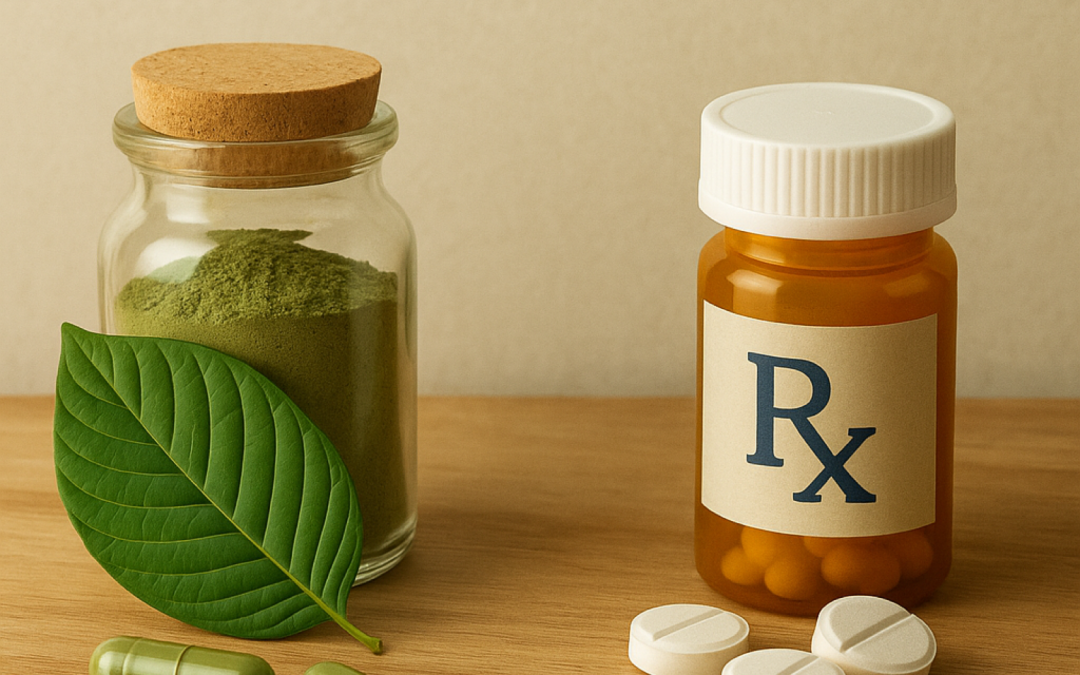The Benefits of Using Kratom Over Opioids
The discussion of kratom versus opioids isn’t just about science — it’s about saving lives. As the opioid crisis continues, kratom is offering new hope: a plant-based ally for those searching for safer, more sustainable ways to manage pain and reclaim their health. In this article, we’ll explore how kratom is helping turn the tide.
Key Points
-
Natural Alternative: Kratom is a plant-based option versus synthetic opioids.
-
Lower Risk of Respiratory Depression: Kratom rarely causes the dangerous breathing suppression linked to opioid overdose.
-
Milder Dependence and Withdrawal: Kratom users generally experience milder withdrawal symptoms compared to traditional opioids.
-
Pain Relief and Mood Enhancement: Kratom can provide effective pain relief while boosting mood and energy.
-
Growing Support for Harm Reduction: Many individuals use kratom to reduce or eliminate opioid use.
Why People Are Turning to Kratom Instead of Opioids
Kratom (Mitragyna speciosa), a tropical tree native to Southeast Asia, has quickly gained attention in the U.S. as a natural alternative to prescription opioids. As awareness of the opioid crisis deepens — with rising overdose deaths and concerns about addiction — many people are seeking safer, plant-based solutions for pain, anxiety, and energy support.
Kratom’s rise is fueled not just by tradition but by necessity: it offers a middle path between unmanaged pain and the life-threatening risks of opioid medications.
1. A Natural, Plant-Based Option
Unlike synthetic opioids manufactured in labs, kratom comes directly from nature. The active compounds in kratom leaves, called mitragynine and 7-hydroxymitragynine, interact with opioid receptors but in a different, often less dangerous way than traditional narcotics. This natural origin appeals to individuals seeking more holistic, plant-derived remedies.
2. Lower Risk of Respiratory Depression
One of the greatest dangers of opioids is respiratory depression — the slowing or stopping of breathing that leads to overdose deaths. Kratom, even at higher doses, rarely causes this effect. While kratom isn’t risk-free, its pharmacology suggests it carries a lower risk of fatal respiratory suppression compared to opioids.
3. Milder Dependence and Withdrawal
People who use opioids over time often face severe physical dependence, followed by agonizing withdrawal symptoms if they stop. Kratom can cause dependence too, especially with heavy use, but users generally report milder, more manageable withdrawal experiences. Many former opioid users describe kratom as a lifesaver during the hardest parts of detox.
4. Effective Pain Relief with Added Benefits
Kratom’s analgesic (pain-relieving) properties are well-documented among users. But unlike opioids, which can sedate and suppress energy, kratom can also stimulate. Depending on the strain and dose, kratom users experience:
-
Reduced pain
-
Increased energy
-
Improved mood
-
Greater motivation
This dual effect makes kratom an attractive option for people who want pain relief without sacrificing their ability to function.
5. A Tool for Opioid Tapering and Recovery
An increasing number of people are using kratom as a harm reduction strategy — transitioning off stronger opioids with kratom’s support. In surveys, many kratom users report that they were able to reduce or eliminate their use of prescription painkillers or illicit opioids thanks to kratom.
While more clinical research is needed, the growing body of personal testimonials highlights kratom’s potential as a bridge to recovery.
Frequently Asked Questions (FAQ)
Is kratom completely safe?
No substance is entirely without risk. Kratom can cause side effects like nausea, constipation, or dizziness, especially at higher doses. However, it generally has a better safety profile than prescription opioids when used responsibly.
Can kratom cause addiction?
Yes, kratom can lead to dependence if used excessively over long periods. That said, the withdrawal symptoms from kratom tend to be significantly milder than those from opioids.
Is kratom legal?
Kratom is legal at the federal level in the United States but banned in some states and local jurisdictions. Always check your local laws before purchasing or using kratom.
What type of kratom is best for pain relief?
Many users recommend red vein kratom strains for strong pain-relieving effects. Red Maeng Da, Red Bali, and Red Borneo are among the most popular for managing chronic pain.
Should I talk to my doctor before using kratom?
Yes. If you are using kratom for pain management or opioid recovery, it’s important to consult a healthcare provider — especially if you have existing medical conditions or take other medications.
Final Note:
Kratom is not a magic bullet, but for many, it offers real hope. Used carefully and respectfully, it could be a safer bridge to better health, less pain, and freedom from opioid dependency.


